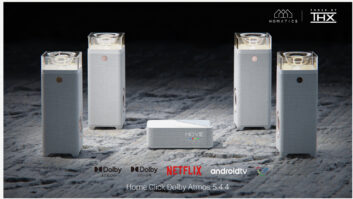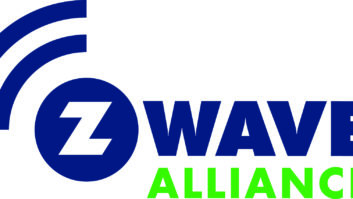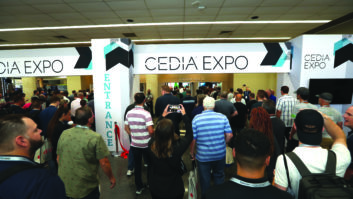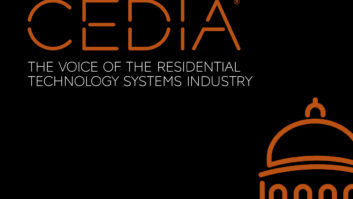There are a number of things that have gotten lost in the “big story” coverage of CES. These are the technologies that may fly under your radar, not always visible or obvious, but which, when they do surface, will have an impact on your business.
The most intriguing of these technologies is one that will assume more prominence as we all get closer to one high-def DVD format or another. The issues at hand are the inter-related combination of the two new audio codecs that will be used with both HD-DVD and BluRay as well as the connectivity scheme that will be needed to take maximum advantage of them. The latter is HDMI and the former, the codecs, are Dolby Digital + and DTS-HD. What you have heard about these items is nothing compared to what you will hear as the year moves on.
As is the case with the range of Dolby Digital and DTS applications, both companies have come up with their version of new advanced, scalable codecs that are designed to take advantage of the high-bit-rate capability of disc-delivered HD programming in a wide range of channel configuration options from two-channel to well beyond the current 5.1 and 7.1 systems. Both are also somewhat backward compatible. They take advantage of down-mixing so that current systems are not going to be totally obsolete; down-mixed (and down-scaled) outputs can be compatible with existing Dolby Digital and DTS products.
The real fun, however, comes when the high-bit-rate versions are used, requiring a secure, high-bandwidth connection between the source playback device and audio processor. That will inevitably mean HDMI. While products equipped with HDMI are here now and will increase in number as the year moves on, the question is open as to exactly which version of HDMI will be required for proper carriage of these new digital audio formats. HDMI is currently on its 1.1 release, capable of carrying current digital contenders plus DVD-Audio. An updated 1.2 spec is due at some point in the near future, however, that will add SACD playback connectivity.
Along with the final composition of the new spec and how long it will take to be implemented in release products is the question of whether or not existing HDMI products will be able to be upgraded to a later (higher) version of the spec. Will it be something that can be added through a software upgrade, or if the processing load is too great, will new hardware be required? Add to that the question of whether or not the existing HDMI system will be compatible with the two new codecs and any other aspect of getting HD-DVD or BluRay signals through a system and you can begin to see the problem.
As is the case with the birth of any product that relies on the tight integration of hardware and software, you need to walk the fine line between selling “the latest and greatest” to customers who want or need to buy today and the uncertainty of whether or not the products that you sell them will soon be obsolete. The computer world, and increasingly our own home theater and systems integration marketplace, have planted the seeds of expectation for upgradeable products, particularly when they are both digitally based and high priced. It remains to be seen (again, and heard) if any audio or video product sold this year will be equipped for HDMI 1.2, full-bandwidth Dolby Digital + and DTS-HD from the get-go.
Technology is moving much faster than it used to, often well inside manufacturers product life cycles where it once spanned two, three or more product cycles. With that in mind it is critical that you be aware of the capabilities of the gear that you sell and install at a given time against its ability to handle something that the client will want or demand, but which is not yet available. The case of HDMI and the new digital audio codecs presents just such as instance. Perhaps along with those “secret” signs that you catalog when interviewing a prospect for things such as their budget, design and color preferences and musical tastes, you might want to begin to add a column on your internal checklist rating their “tolerance for frequent product upgrades.”
The next 802.11 wireless standard is another one that is lurking just under the surface. The 802.11n standard will deliver considerably greater throughput than the current standards over a wider range and do it with less power required in battery-powered devices. No, “n” wont be able to replicate the incredible data that will be transmitted over UWB connections, but it will have specs for all other parameters that will knock your wireless socks off.
It may be said that 802.11n is a lurker, because it is certainly not a secret. It is, however still very much under development and discussion in the various task groups within the engineering community and it is expected to be more than a few months, perhaps into late this year before the standard is finalized. That, in turn, means that it will be well into 2006 before any officially certified 802.11n products are available. In the mean time a number of companies are already building products using the different variations of the “MIMO” (multiple in/multiple out) technology that will form the technology core for 802.11n. Again, not a problem, and perhaps a benefit as these products do deliver some of the benefits that the eventual standard will, though not to the same degree. These proprietary standard enhancements are known by a variety of trade names, and some are even latching on to the growing awareness of the work going on to develop the new standard by calling their products “pre-n.”
During the introduction stages of 802.11g we saw a similar scenario. Before the standard, there were competing, proprietary technologies used to deliver higher throughput on an existing standard. As the new standard grew closer, many of the access point and wireless card suppliers anticipated it by offering “pre” products that would later be software/firmware upgradeable to the final, approved standard. For the most part, that transition worked reasonably well and most all of the products that were advertised as upgradeable could be converted in the field to the new standard.
Unfortunately, things are not close enough for that to happen here. It is just too early to create hardware that is guaranteed to be compatible with the standard, as many of the key elements of the standard have not yet been decided. Indeed, the WiFi Alliance went so far as to issue a statement last October stating that “Pre-standard products always present an inherent risk for technology adopters, and that is why we will not certify 802.11n products until the IEEE standard is finalized.” There is nothing wrong with these products in and of themselves, and reports are that they make good on the performance enhancements that they promise. However, as with our other “under the radar” technology, be careful about what you promise for this one.
The lessons learned from “pre-g” definitely hold true here and then some. As noted, the likelihood that these products will be upgradeable to the eventual standard is a big question. Even though these products do work as advertised in the mean time and are compatible with conventional “b” and “g” products within the boundaries of those standards, they will only deliver the enhanced performance with products that use the same technology, and perhaps of the same brand. Thus, while you will get the extended range and throughput from a “pre-n” access point to a matching “pre-n” wireless card, when someone brings a laptop home from school or the office you will not be able to get the same benefits.
There is a final note, whether you use the “pre-n” products or are planning for the “real” 802.11n systems when they become available. The nature of the MIMO technology is such that the one or two antennae you are used to will be replaced in many cases by two or three. As you plan access point positioning for the eventual installation of “n” products, keep this in mind for the impact it will have on clearance from walls and for the impact adjacent surfaces may have on signal propagation.
So much for lurking technologies, what about those that were above board, but perhaps not obvious directly applicable to installations? Im referring to the stuff that makes ours a fun industry and CES a valuable experience. There were so many iPod accessory products on display at CES that the category could hardly be described as lurking. So many, in fact, that we will cover them in full on their own in the future. In the mean time, however, two products come to the surface that merit your attention. A personal favorite is the radioShark from Griffen Technology. This $69 accessory gets its name from its fin-like shape, complemented by colored swipes that are blue when the unit is on and red when it is recording.
Thats right, the radioShark is a device that works with the hard drive on your computer to not only deliver FM/AM radio capability, but to give you or your clients the same “live pause and resume” and time-shift capabilities for radio broadcasts that they have come to expect from the DVR devices. If your clients want to record a late night talk radio show and play it back the next morning while on the treadmill or exercise bike, this is the perfect way to do that. Even better, the recorded files may be imported into iTunes and then burned to a CD for use in the car or loaded onto an iPod for use anywhere the iPod follows you. This is a great way to help your clients expand their use of digital audio programming.
Another iPod-related product is one that may be more applicable to your business rather than client applications. “Migo Personal for iPod” from PowerHouse Technologies expands upon their existing USB flash drive “fob” devices to take advantage of the hard drive space of an iPod to store data rather than music or photos. With this software you simply connect the iPod to a Windows-based computer and create a virtual copy of your PC, complete with your Internet favorites, desktop wallpaper and even Outlook and other data files. If you travel frequently and need to bring your files, but dont want to lug your laptop with you, this unique software lets you task your iPod to double-duty and not have to take anything more with you than you really need.
While you take your iPod on a business trip to a convention or client meeting, how will you find your way to the meeting? Sure, you could get a special purpose navigation system or spend the extra money for one of those “sometimes lost” systems from the car rental companies. On the other hand, if you have a PocketPC or Palm PDA there are a number of innovative solutions that connect a GPS receiver and mapping software to create an instant turn-by-turn navigation system. A favorite from CES requires a Bluetooth-equipped PC or a PDA or PDA/SmartPhone such as the Dell Axim x50 or iPaq 6315, as it uses the popular short-range connectivity technology to link the satellite receiver to the PDA.
With the right software and DeLormes BlueLogger, your PDA can be equal to the best nav system. When someone else is making the trip, however, the BlueLogger has a more interesting function that can help you run your business more effectively. This matchbook-sized GPS receiver works on its own as a standalone GPS receiver that stores the route of its owner as long as theres a clear view of the sky. Were not suggesting that you use this to spy on employees, but rather that it serves as an indisputable way to prove that service calls were made and that time was spent on the job at a specific location even when the client isnt home or there is no other way to verify who was where, and when.
You prove all of this by using the Bluetooth link to download the BlueLoggers memory into a PC with the proper software and you have hard evidence of the location of the device (and presumably the person who was carrying it) and the time the device was at the location. Easy, technological, and a great way to help guide you or your staff to a job and then prove that they were there.
Finally, when you get back from that business trip where the iPod carried some radio shows from a radioShark along with computer data and, of course, your iTunes library, how will you prepare your expense report in a way that satisfies your accountant, the client being re-billed, and not to be ignored by Uncle Sam and the IRS? By now, weve all seen or used business card scanners, but how about a specialized scanner/software combination designed to scan in and store copies of the receipts from a trip. Thats easy to do with a standard scanner, but how about a device that reads the data from receipts as they are scanned and (in most cases) automatically recognizes the type of charge and puts the data in the correct fields of a pre-formatted expense report template, or translates it into the formatting needed to export the expense data into QuickBooks, Quicken, Money, Excel or Word? With NeatReceipts you simply feed the receipts in and with some minor corrections and expense allocations when needed, an expense report is created. You can even set things up so that the receipts are e-mailed to an address from your Outlook address book. This sounds like magic, and perhaps to some extent it is, but if it works, for $199, why not go with it?
This inventive combination of optical scanner technology and character/image recognition algorithms makes it easy enough to take care of the boring, but necessary task of getting expense reports done on time. Face it, you generally have to make a copy of receipts anyway, so that one copy goes in the company files, one goes to the client and one for your own files. In the time it takes to make copies, manual corrections and expense allocations included, you end up with the final report for submission as well as having a permanent copy in an electronic file that can easily be printed out as many times as you need.
With that, it is time to put the 2005 International CES to rest and look ahead to the evolution of these and other product developments. As the year moves forward well chart their paths for you to see how things fall into place.
Michael Heiss ([email protected]) is a technology and marketing consultant based in Los Angeles.







